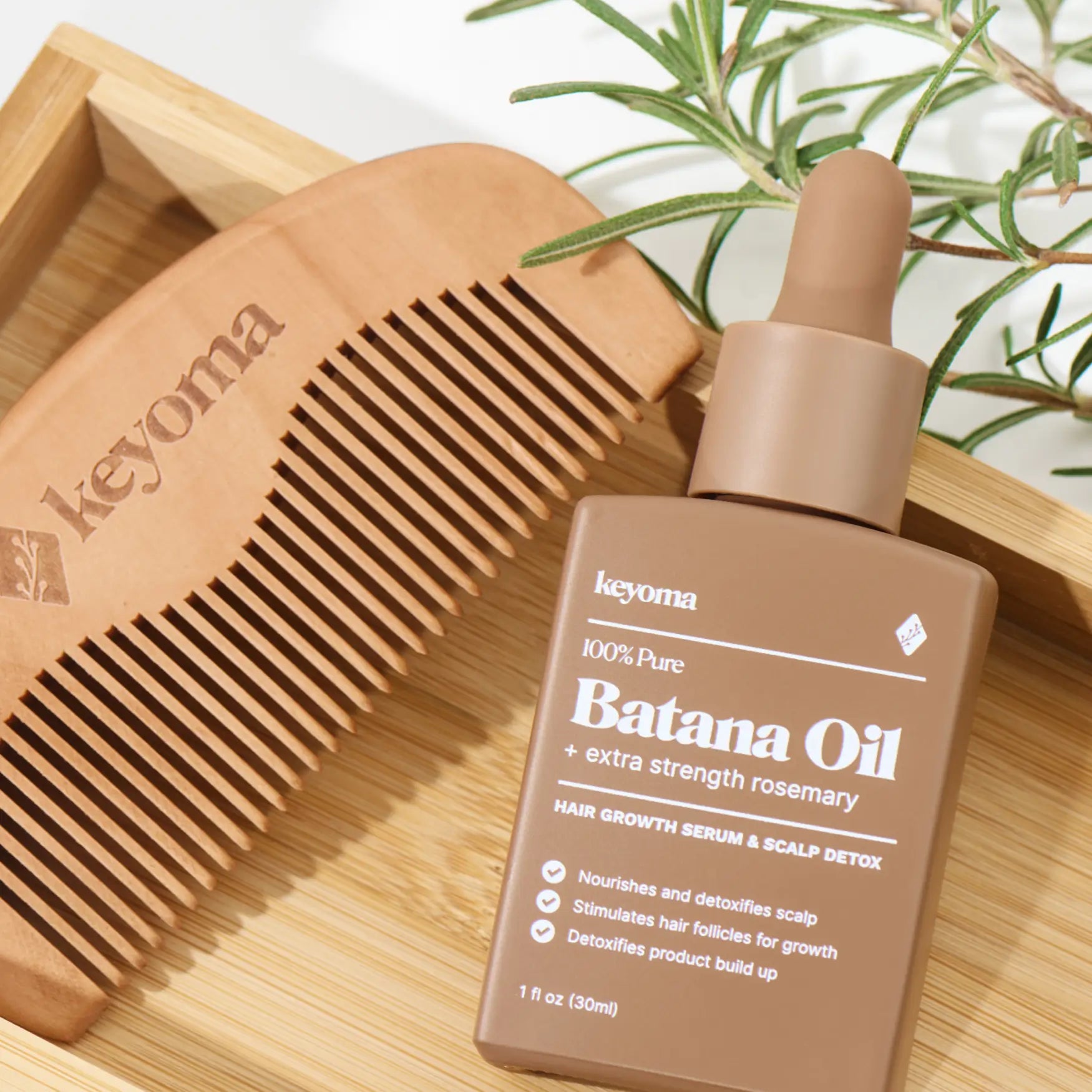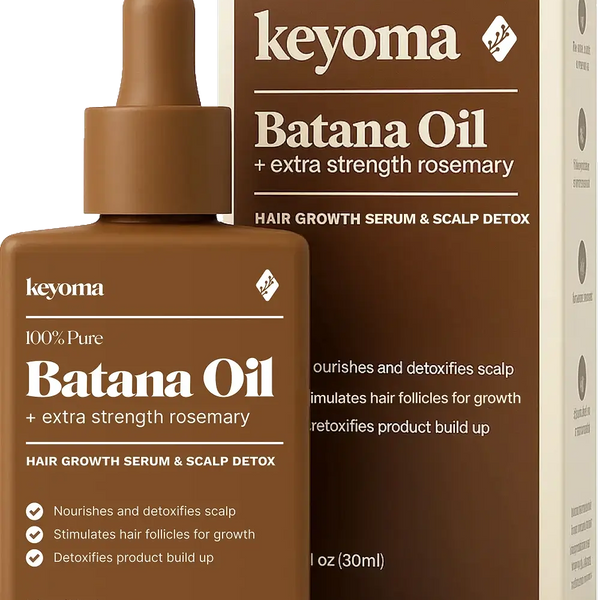In this article
The shampoos and stylers you choose strongly shape hair health, condition, and look. Depending on each formula’s ingredients, a product can support different needs for your scalp and strands.
People have turned to cedarwood oil for a long time. In 17th Century England, it was used for coughs and trouble breathing, and ancient Egyptians used it during mummification to deter insects and contamination.
Today, cedarwood oil is valued for its warm, calm scent and for benefits that extend to skin and hair care.
Key Takeaway
-
Cedarwood oil may reduce dandruff, scalp acne, lice, odor through antibacterial and antifungal actions.
-
A seven-month trial reports reduced hair loss in alopecia areata with diluted blends.
-
Cedrol in cedarwood may stimulate regrowth and improve scalp circulation and follicle health.
-
Safe use requires dilution, patch testing, avoiding ingestion, and caution during pregnancy.
What Is Cedarwood Oil
Cedarwood oil is an essential oil sourced from trees such as pines, cypresses, and junipers. Producers extract it from needles, bark, roots, or stumps of these trees. Although the name says “cedarwood,” high quality oils also come from cypress or juniper, not only true cedars.
Historical records show Egyptians and Sumerians used oil from the Cedars of Lebanon to keep bodies pest free during embalming. Its role has broadened since then, with common uses for skin comfort and hair care.
Hair Benefits of Cedarwood Oil
Before choosing where cedarwood fits in your routine, it helps to know what it can offer your scalp and strands. The next section outlines potential upsides so you can match them to your goals and hair type. Below are the benefits of cedarwood oil for hair.

1. Helps Manage Alopecia and Hair Loss
Alopecia areata, also known as Indralupta, is an autoimmune disease and a major driver of heavy shedding. A clinical trial lasting 7 months reported cedarwood oil helped in managing alopecia areata.
In about 43 patients, regular scalp massage with cedarwood plus other essential oils, diluted in carrier oils, led to less hair loss and signs of improvement.
2. Relieves a Dry Scalp
Ayurveda notes cedarwood oil can balance vata, which when aggravated contributes to dry scalp concerns. Current evidence suggests its anti-inflammatory actions may calm the scalp and help with seborrheic dermatitis. Consistent, diluted scalp massages may ease irritation, itching, and flaking.
3. Supports Hair Regrowth
Cedarwood oil may encourage new growth in areas that are thinning. Researchers observed that cedrol, a sesquiterpene in this oil, shows growth promoting activity. Its effect on regrowth is often compared with minoxidil, a commonly prescribed vasodilator for hair loss.
4. Boosts Scalp Blood Flow
Cedarwood oil is thought to support follicle health by improving scalp blood flow. Better circulation can aid nutrient delivery to roots and may reduce thinning, split ends, and breakage.
5. Calms Scalp Acne and Folliculitis
Scalp acne and folliculitis can develop when hair follicles become clogged by excess sebum, dead skin, and bacteria. Cedarwood oil’s astringent, vata balancing nature helps moderate oil output while avoiding excess dryness.
The papers I saw show sesquiterpenes such as thujopsene, cedrol, and cuparene have antibacterial properties that can limit bacterial overgrowth on the scalp.
One review notes a 2016 report where cedarwood oil use aided acne care in a single patient.
6. Helps Control Head Lice
Cedarwood oil functions as an insect repellent. Massaging diluted oil through the scalp and hair can help manage a head lice issue.
7. Reduces Scalp Odor
Scalp odor often stems from bacterial or fungal growth. Thanks to antibacterial and antifungal activity, using cedarwood oil alone or mixed into shampoo can help with odor. Its cleansing feel and woody scent leave hair smelling fresh during the day.
8. Addresses Dandruff and Other Fungal Infections
Cedarwood oil shows notable antifungal effects, largely associated with its main component, cedrol. It can be used against scalp fungal issues such as dandruff and ringworm.
Safety Precautions for Cedarwood Oil
Cedarwood oil is considered generally recognized as safe (GRAS) by the U.S. Environmental Protection Agency when used on skin as an insecticide or as a food additive.
Skin reactions are uncommon, but careful use matters. Always dilute essential oils in a carrier oil, and do a patch test before wider use.
Do not ingest essential oils, and skip cedarwood oil if you are allergic to cedar. A little care goes far. Keep the following in mind:
Pregnancy: If you’re pregnant, especially in the first trimester, use cautiously or consult a clinician.
Skin Test: Everyone reacts differently. Test a tiny amount on the foot first to check for irritation.
Follow Directions: Overuse can sensitize skin. Stick to the bottle’s guidance on drops and dilution.
Avoid Eyes: Keep away from eyes, nostrils, and open skin. It is not for mucous membranes.
Using Cedarwood Oil for Hair
Essential oils are highly concentrated plant extracts. Used incorrectly, they can sting or irritate. Below are safe, practical ways to try cedarwood oil on hair.

Direct Massage
One effective method is massaging oil into the skin. Never apply undiluted oil. Mix cedarwood with a carrier oil such as coconut or jojoba before use, then work it into your scalp. For me, a lighter carrier tended to absorb faster and feel cleaner.
Massage can also take the edge off stress through simple relaxation. A gentle scalp massage often feels great.
Topical Application
Topical use includes massage, but it also means targeted spot care. Dilute the essential oil, then dab onto a small area as needed. Early data points to possible benefits linked to anti inflammatory properties, so it may help soothe discomfort from ingrown hairs.
Aromatherapy
Aromatherapy uses scent to support overall well being. You can try diffusers, vaporizers, or even hot water. For hair focused use, adding a few drops to a warm bath is a direct option that lets the aroma rise while the oil contacts skin and scalp.
Conditioning Mask
Another option is a simple mask. Combine 2–3 drops of cedarwood oil with a few tablespoons of a carrier oil you like. Good choices include argan, coconut, or avocado oils. Apply to the scalp for about ten minutes, then rinse well and shampoo as usual.
Adding Cedarwood Oil to Products
Many store bought items already contain cedarwood, but you can make your own mixes too. Add a few drops to a neutral base, blend, and work into your regular products.
Build a Safe Cedarwood Oil Routine With Keyoma
Treat cedarwood oil as a focused scalp tool you use with care, not a cure. Keep it diluted in a carrier, patch test first, never ingest it, and use caution during pregnancy. Apply a few drops to a clean scalp and massage briefly to support comfort and hygiene, then stop if irritation appears.
For clear routines, ingredient explainers, and research you can use, follow Keyoma’s blog and social channels for ongoing hair care tips.
Featured Product
100% Pure Batana Oil + Rosemary









